Summer expeditions to the Arctic by groups of researchers from EU-CONEXUS
Iceland and Greenland: Edge of the Arctic
This summer, dr. Dzmitry Lukashanets, researcher of the Marine Research Institute of Klaipėda University (MRI KU), joined the cruise to Iceland and Greenland on an ice-class expedition vessel National Geographic Explorer as a visiting scientist onboard.
The cruise was organised by National Geographic Expeditions and Lindblad Expeditions, global providers of expedition cruises and adventure travel experiences, which are well-known for their support to science through offering an opportunity for researchers all over the world to join their cruises.
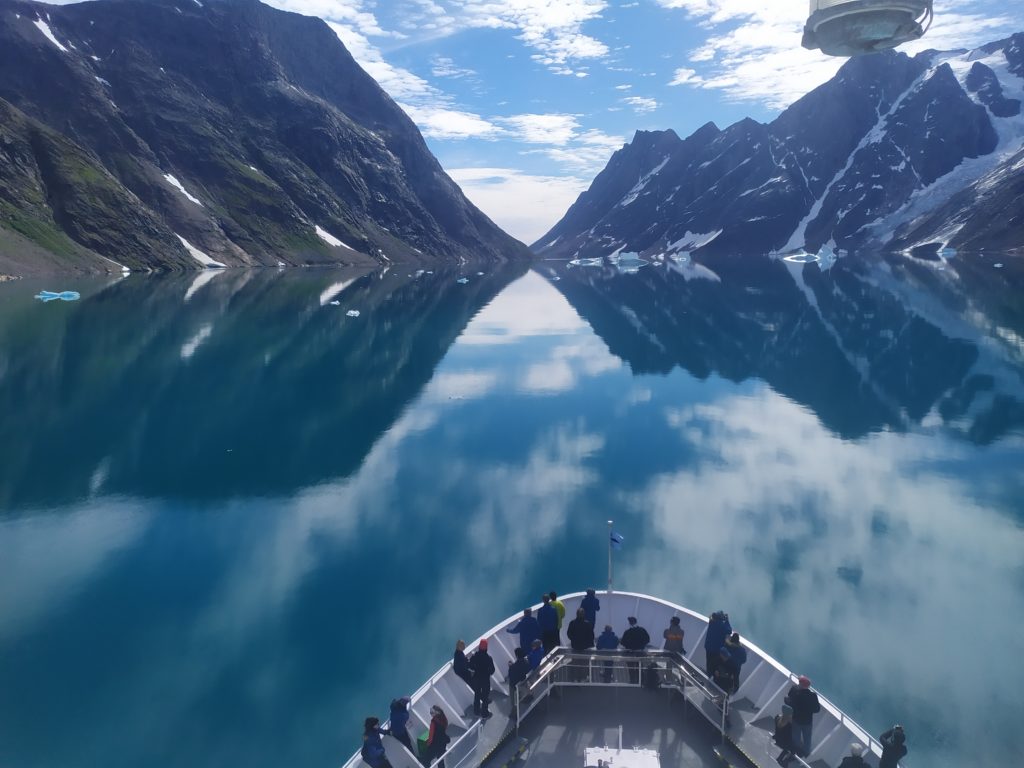
The voyage Iceland and Greenland: the Edge of the Arctic lasted from July 31 to August 15. Thanks to the assistance of the vessel crew and expedition staff, dr. Lukashanets was able to conduct the fieldwork in those remote areas. He collected extremely valuable material in both Iceland and Greenland: a stroke of luck for polar biologists whose activities are usually limited to Svalbard (Norway). He intended to study the micro-fauna community in the terrestrial vegetation of coastal areas. In total, dr. Lukashanets sampled three sites in Iceland and nine sites across the western coast of Greenland.
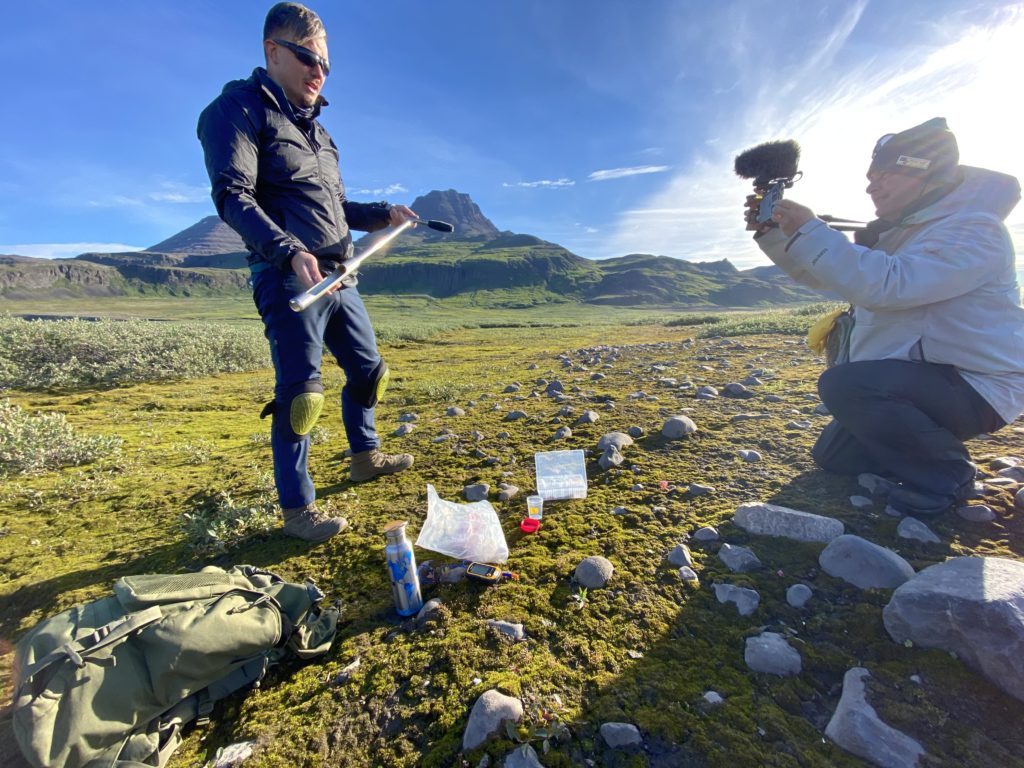
This region is still little known, even compared to other Arctic areas. The second advantage of the sampling campaign was that the sites of the collection were distributed within approximately 1200 km from south to north, which makes it possible to consider the latitudinal gradient. The main goal of dr. Lukashanets was to figure out how micro-fauna species and communities change in relation to the distance to latitude. The samples are to be shared with the representatives of Adam Mickiewicz University (Poland) and Prague University (Czech Republic) and are to be studied comprehensively, covering as many aspects as possible: from the body size to the population parameters.
Eidembukta Project
In a different part of the Arctic, in Svalbard, a group of researchers from MRI KU studied the changes in the Arctic and how the ecosystem of the Baltic Sea formed after the Ice Age.
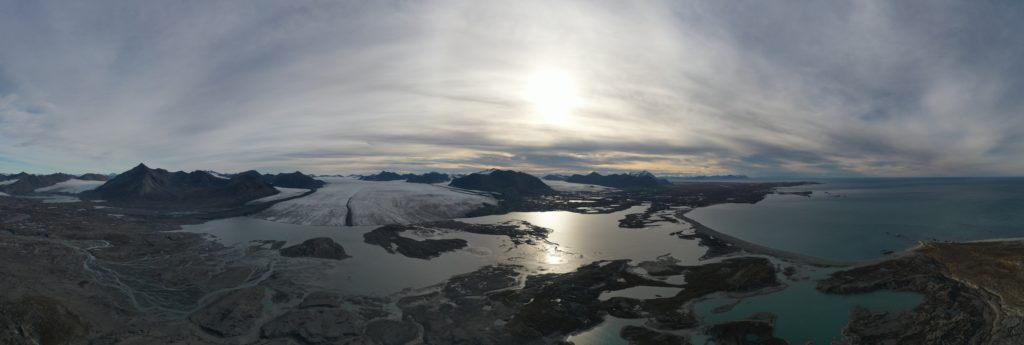
A joint group of seven researchers from the MRI KU and the Institute of Oceanology of the Polish Academy of Sciences (IO PAN) collaborated to examine a new harbour on the Arctic coast that was created only a few decades ago as a result of glacier retreat and melting on the island of Spitsbergen (Norway).
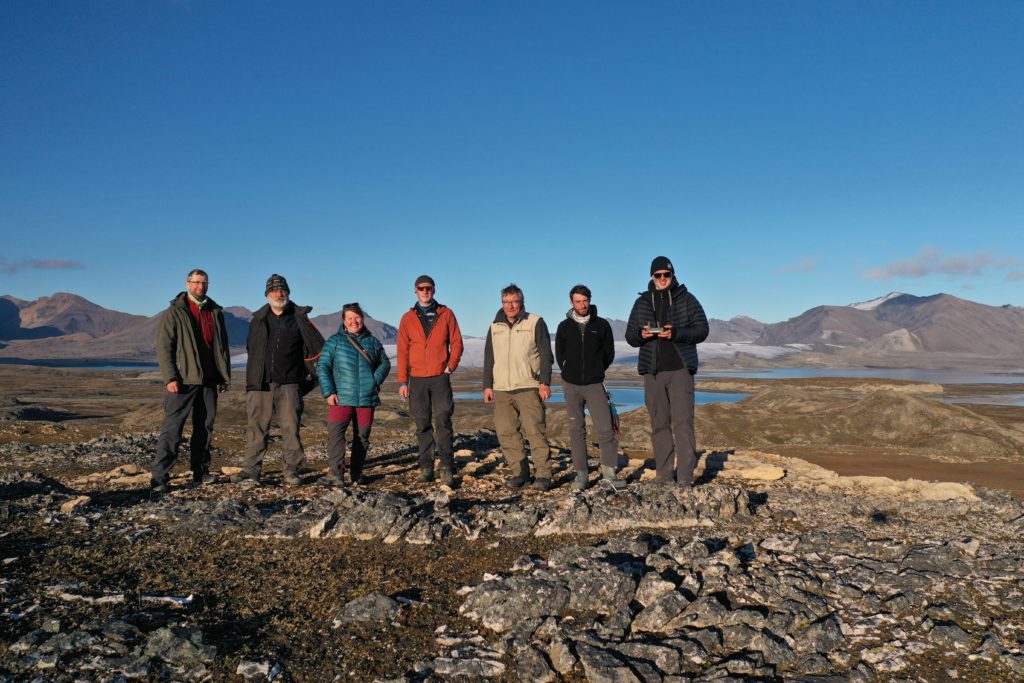
The project’s major objective was to comprehend and precisely explain how new polar lagoon ecosystems emerge. Prof. Sergej Olenin, the team’s leader, said that MRI KU researchers visited Eidembukta for the third time. “While working on other projects in 2019, we became aware of this water body for the first time. In 2021, we began our initial research, and this year, in 2022, we launched a brand-new project called Formation of a Novel Coastal Lagoon Ecosystem Following Glacier Retreat Eidembukta, in Svalbard Arctic“.
To quote prof. Sergej Olenin, they gained invaluable knowledge and, one might say, tested their comprehension of how the Baltic Sea ecosystem was formed through observing the rapid changes that occurred there and conducting systematic research. After the end of the Ice Age, similar processes also took place there. It was his sixth expedition and the third one for the three of his coworkers, dr. Andrius Šiaulys (marine biologist, bottom habitat research specialist), dr. Aleksej Shashkov (marine cartographer, hydrologist), and dr. Tobia Politi (biogeochemist).
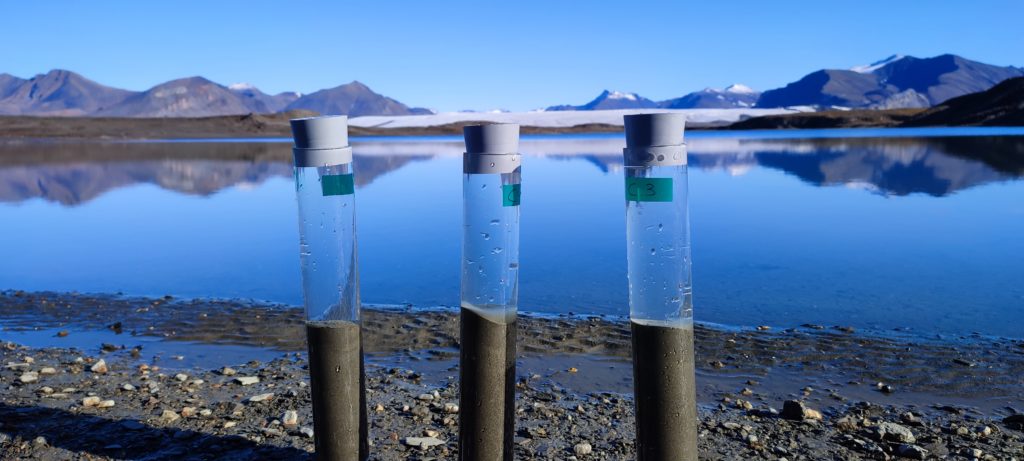
Seven researchers spent a week in a tent. Every night, the crew members took turns to keep an eye out for polar bears, who were the actual hosts of those locations. Prof. Sergej Olenin, the team’s leader, was grateful for seeing the bears only on the last day of the mission and in a safe distance.
Another part of the research material gathered during the expedition was transported to Gdansk, where the IO PAN is located, by the ship Oceania. It arrived at the Institute at the end of September and is presently being prepared for laboratory analysis.
Mission Greenland 2022
This summer, a team of eight 8 scientists from the LIENSs research unit of the University of La Rochelle went to Greenland to collect seabird samples for different projects. Samples of blood, feathers, and faeces were collected, among other things, to answer the questions about the impact of global change and contaminants on the ecology of little auks, black-legged kittiwakes, and common eiders.
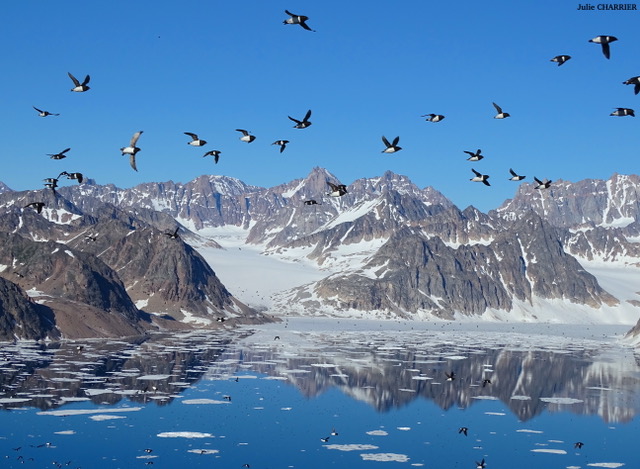
Exhibition on Climate Change
Researchers from the Catholic University of Valencia were also working on the climate change during this summer. Prof. Pablo Vidal together with the photographer David Cantillo organised an exhibition entitled El Temps està destarifat. Climate Change Perception of a Generation, which will move to Yale University (USA) at the end of October.
At the exhibition, the researchers presented the perceptions of senior people who compared the yesterday versus today, focusing on various manifestations of the climate change affecting nature.

